
views
Starting an Online Tea Business
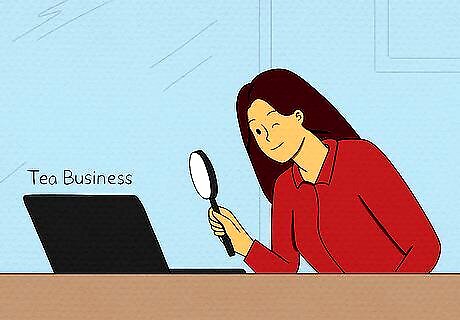
Research the market. Before you make any decisions about starting a new business you need to do some thorough research of global tea markets and the wider tea business world. Look online for stories and statistics that can tell you about the big picture of tea. Here you will get a good idea of the state of the market, where there is growth, and where there is stagnation or decline. You can also get an idea of the potential long-term trajectory of a successful tea business. Look for case studies on tea companies in national and international business and financial websites to learn from successful businesses. If you are starting an online business and intend to sell your goods internationally, it's important to get this broader perspective from the start.

Decide what your business will do. In today's ever-growing entrepreneurship environment, determining how you will set your business apart is crucial. No matter if you choose to sell nutritionally sound, high-end, or exotic teas, identifying your specific angle and sticking to it is a necessary step. Ask yourself what would be unique and different about this business.

Develop a business plan. Now you need to develop a sound business plan. A tea business can be a relatively simple buy and sell business so you should try to keep your business plan clear and focused to reflect this. Include information on what will make your business unique, as well as your goals, financial projections and the strategies you will enact to reach them. Try to include all the pertinent details, but keep it concise. Have a clear timeline with specific goals you will achieve by specific dates. This could include the day the website will go live, and the point at which you will turn a profit. A good clear and achievable business plan is essential, especially if you are hoping to gain funding from a bank to support your start-up costs. There are some examples of tea business plans available that you can read online.

Investigate the legal requirements. As part of the process of developing your business plan, you will need to ensure you have a full understanding of all the legal requirements associated with starting a new business. This will include things such as taxes and rates. You cannot skip this part, and it's important to get it right. For this reason it's advisable to speak to a solicitor who specialises in new businesses for advice and guidance. For an online business you need to think particularly about how you will protect your customers' privacy and financial information. In the US the Federal Trade Commission deal with new online businesses.

Find your suppliers. Typically, the best and most popular teas come from the leaves, barks, and roots of plants and trees grown in China, Africa and India. While you may be able to obtain teas from other parts of the world, their quality may not be as high as those grown in these three regions. Contact companies who are already experienced in exporting tea to other parts of the world. Make sure that these individuals are aware of exactly what types of teas you are interested in carrying, and have agreed to a specific price, before signing a contract. Speaking to other people in the tea business can be a helpful way to find out more about the reputations of specific suppliers.

Develop your website. The next step is to develop your website. This is effectively your storefront so it's essential that it is attractive and draws in customers who won't dawdle on your site if they don't like it. You need to keep it simple and clear, as you will have just a few seconds to grab someone's attention. Research successful sites online, and try to stick with the following basic principles: Make navigation across the site simple, easy, quick and intuitive. You should have a template so that every page is negotiable in the same basic way. Keep the page clean, with just one or two basic fonts on a white or pale background. Only use video, graphics or audio if they really enhance your message. Make it easy to buy with as few clicks as possible between the potential customer and the check-out.

Market your business. Once you have your site live, with your goods ready to go, you need to drive traffic to your online store. Consider using pay-per-click (PPC) advertising to get traffic to a new site. PPC ads appear immediately on search pages so you can avoid some of the lengthy process of moving your site up the list of search results. You can also use PPC ads to test out which keywords are the most effective for you. Once you know which keywords come up most frequently you can ensure that they appear throughout your website to optimise it for search engines. Use analytics to assess the performance of your website and see where your traffic is coming from.
Creating Your Own Tea Brand

Evaluate existing brands. Developing your own tea brand is one way to start your own tea business. This will involve you buying unpackaged tea leaves from suppliers and developing your own packaging and branding for your distinct product. There are also long-established brands in traditional tea-drinking countries such as the UK. Research these brands and determine what makes them successful. Some market tea as a healthy option. When you do this research look for gaps in the market or ideas that nobody has thought of yet. Do not market your brand solely based around the competition, though. This market analysis will help you identify what's lacking with the competitors, but only through trial and error will you be able to fine tune your products and services.
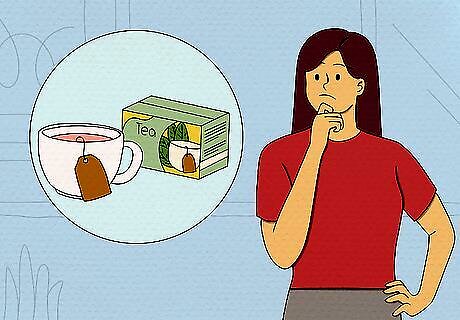
Have a clear picture of your tea brand. While you are doing research on the existing brands you should be trying to formulate a clear vision of what will distinguish your own brand of tea. It's essential to have clarity of purpose to help drive you through difficult times. Maybe you will present your tea as a healthy alternative to sugary drinks, or a tasty and perhaps slightly exotic drink that you can have throughout the day as an alternative to coffee. Once you have this clear vision you need to find the place in the market to pitch your product, and the customers you want to target. You need to be able to confidently express the distinct features of your brand. During this stage, it's also helpful to brainstorm possible names for your brand. Your brand name should be memorable, unique, and linked to your overall vision for your tea brand.

Draw up your business plan. An essential part of any new business is the establishment of a clear and focused business plan. This plots the core values and identity of your business as well as mapping your plan for growth and success. Typically a business plan should begin with an executive summary, and then a company summary. There are helpful online tools to help you build your business plan to a basic template, and give you examples to follow. The following should be covered in your plan: Products and services. This section details what your business will be selling, what your products are and your reasoning. Market analysis summary. Here you will record your market research and clearly identify the area in the market where you will push your product. Strategy and implementation summary. This section should give a clear outline of how you will develop your business. Start with getting your goods to market and then detail your plans for growth with a clear timeline and objectives. Management summary. This section will give details on how the business will be run, what your management style will be and how this will affect the business culture and operations. Financial plan. Finally, you will need to give detailed information about the finances. Provide a full breakdown of costs and revenues. Mark break-even points and when you will turn a profit. You should understand the difference between revenue and profit. Revenue is the money you get every month. Profit is the money that remains after paying for all the expenses. If you do not make sufficient profit, you should change something in your budget.
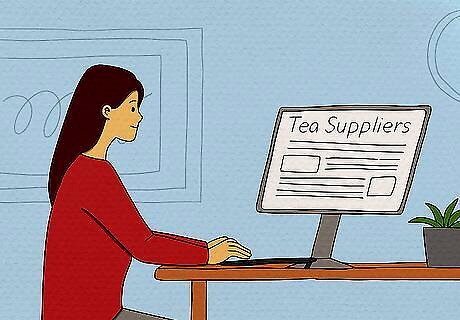
Find your tea leaf suppliers. You can buy leaf loose, or in prepared tea bags. It's likely that you will sell it as you receive it, just re-packaged, so bear this in mind. Decanting loose tea leaves into individual tea bags would be very time consuming, but if you are going for a homemade look and feel it could be a good choice. Make sure you know exactly what you are getting and ask for samples before committing to orders. Search online at first to get a basic idea of suppliers globally and those operating in your locality. Some online databases can be useful first points of call. Think about environmentally friendly and sustainably produced tea leaves which can become a part of your brand identity as well as be an ethical way to do business. Go to trade shows, read trade publications and ask around people in the industry. This kind of specialist knowledge and experience can be invaluable.

Design and order your packaging. Once you have a clear supply route planned out you need to move on the next phase of your product development, namely designing the packaging and branding artwork. You may choose to hire someone with expertise in graphic and product design to help with this. It will probably have to be produced on a computer and be of high quality for any manufacturer to produce it for you. Remember in the early stages you need to start small, so get a small run for samples and promotions first. The packaging will be the main way people identify your brand so think about this very carefully. Consider running some focus groups with people you can trust to give you honest feedback. Think about function as well as form. Do some research online and ask for advice from professional designers.
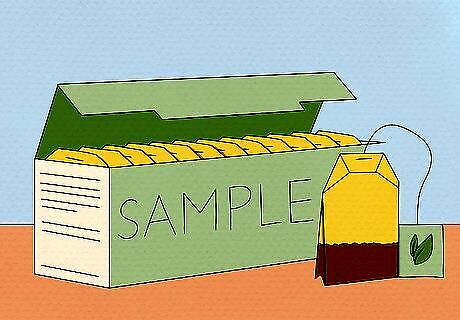
Create a sample box of tea. When you have drawn up the plan for your brand, it can be helpful to produce a sample box or two. You will need to get the tea you want to sell and package it as you like. Once you have this you can use it to promote your tea business in local stores and tea rooms to gauge interest and develop contacts before you put in any big orders with suppliers. A prototype product enables you to test it for durability as well as get a proper impression of how it looks and functions. Having a prototype will make people take you more seriously. Your product is becoming a physical reality rather than just an idea. Being able to hold and use something makes a big difference.
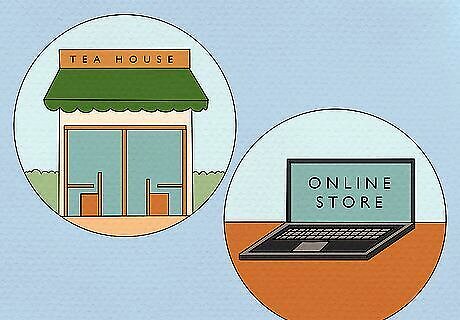
Decide how you will sell your tea. Once you have a clear picture of the brand you want to create you need to decide how you will sell your tea. Will you be an online-only business, taking orders and shipping tea across the world? Maybe you will try to sell to local tea rooms and stores. Or perhaps both! How you sell is the major part of your business so it's important you consider this fully and have a clear plan and target audience. It is relatively easy to create a website, but there are already a large number of online tea stores so you need to think about how you will stand out. If you plan to sell face-to-face locally, ensure you survey demand in interest in advance. Visit some local tea rooms and shops and ask if they are interested in getting a new supplier. And bring your samples!
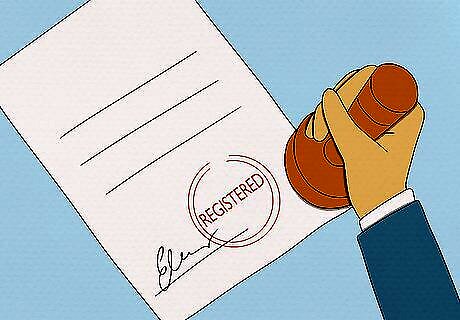
Register your business. Before you start business you need to ensure you have completed all the legal and regulatory requirements in your area. This can be a complicated area so it's a good idea to consult an expert in small business start-ups to ensure all the bureaucracy is properly taken care of. You will need to officially register your business name, as well as registering with local state agencies. In the US you can do this through the government's Small Business Administration.

Market your tea online and in person. Once you are ready to sell you need to begin marketing your tea. Your marketing plan should have taken shape when you were drawing up your business plan, and now it's time to put this into action. Try to market your brand in a way that speaks to your desired brand identity. You will need to consider how you will reach your audience and distinguish yourself from the competition. Using an social media campaign can be effective way to set yourself out from other older tea brands. Having a strong and consistent social media presence for your brand can help you to establish a distinct identity and foothold. You can consider including recipes and facts about tea to broaden your output.
Opening a Tea Room

Research the local tea room scene. Tea is versatile enough to allow for sale both in person and over the Internet. If you want to open up your own tea room you need to follow some of the same steps as for an online business, but particularize them for your business. A tea room will be in a fixed locality so when you research the market you are not looking at worldwide sales as much as what is going in your town, or where you plan to do your business. Take a look around and evaluate areas where a tea room might be successful. Think about the neighborhood and the businesses that are already there. If there are already tea rooms nearby this could indicate a strong demand in the locality, but that doesn't necessarily mean there is enough demand to support a new tea room too. The sunk costs and liabilities for this kind of business will likely be higher than an online business so be sure to research your local market thoroughly.

Find your premises. Once you have decided which part of town to have your tea room you need to find the premises that will house your business. This is a decision that could make or break your business so don't rush it and regret it. Your location needs foot traffic as well as parking opportunities. It needs to be easily visible and easy to access. There might be a tea room available to buy, so check your local listings. This could potentially save you money on furnishings, but it might be for sale because it's poorly positioned. Remember that when you are negotiating a lease, everything is negotiable. Stick to your guns and don't get involved if you are not comfortable with the landlord. Seek specialist legal advice for any contracts and lease agreements.
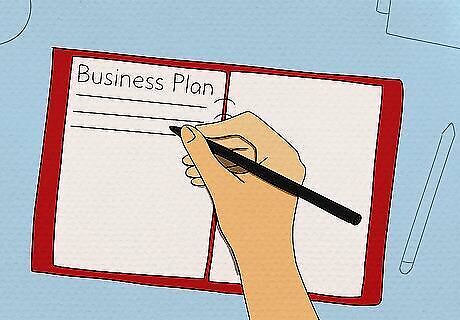
Develop your tea room business plan. The same principles of the business plan for an online tea shop apply. You should aim for a clear, concise and achievable business plan that is well-researched and fleshed out with all the detail you need. The trajectory, goals, and strategies for a tea room will be different for an online store, but a clear timeline with estimated dates for break-even and turning a profit should still be the corner stones. Other landmarks could include the date you sign for a lease on premises, by when you will have purchased or leased all the required equipment, and the date you begin the marketing campaign. Again, there are examples of tea room business plans you can read on the web for an outline.

Build up your supplier relationships. Just as with an online store you will need solid and dependable suppliers. If anything it is more important at a physical store. If someone has travelled to your tea room and you are out of stock, don't expect them to come back. In the initial period, when you don't really know how many people will come through your door, it's important to have enough stock. Choose your teas carefully and test as many as possible. There are a huge number of tea varieties, and the ones you go for will help shape your tea room's identity.

Fulfill all legal requirements and secure funding if necessary. You will need to register your business with all the appropriate official bodies as well as having proper business banking arrangements. You should consult with a legal expert with specialist knowledge on small business start-ups and not take any chances with legal and financial stipulations. The legal requirements will vary depending on where in the world you are, so be sure to seek expert help. You also need to investigate any licences and permits that you will require. These could include food hygiene and health and safety certificates for you and any staff.

Know what will distinguish your tea room. When you are getting ready to open your doors for business you need to have a clear idea of how it will look and what will distinguish it. As well as having a particular selection of teas, you might want to go for a particular look and atmosphere that you think will attract your target customers. Everything from decor, to music, to staff can have an impact on the impression someone gets when they come through the door. Coffee and tea shops can develop a strong core of regulars who provide reliable and consistent custom for your business. This can make it hard to break in, but if you find your niche it can be very fruitful. As well as the decor, don't neglect the actual equipment that you will use to make teas and coffee. You can have a great looking tea room, but it is not likely to be successful if the drinks are lousy.

Promote your tea room before the launch. Depending on the type of business and the customer base, marketing and advertising can be done on the Internet, through magazines, newspapers, or even in television commercials. If you are opening a local tea room, target your promotion in the nearby area. Consider using an online promotion on social media with special offers to attract customers at the start. In an increasingly crowded market, it's essential to emphasise what makes your tea room unique and special. Think about the various ways to market your teas which will appeal to different people. Some will be attracted by the health benefits, others by the uniqueness and unfamiliarity. Update your advertisements on a regular basis to stay fresh and attract new customers. After launch, word of mouth is incredibly important to keep your business thriving! Make sure to offer a great product and an excellent service to keep your customers coming back for more and bringing others with them.















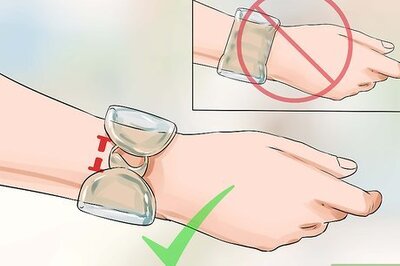



Comments
0 comment